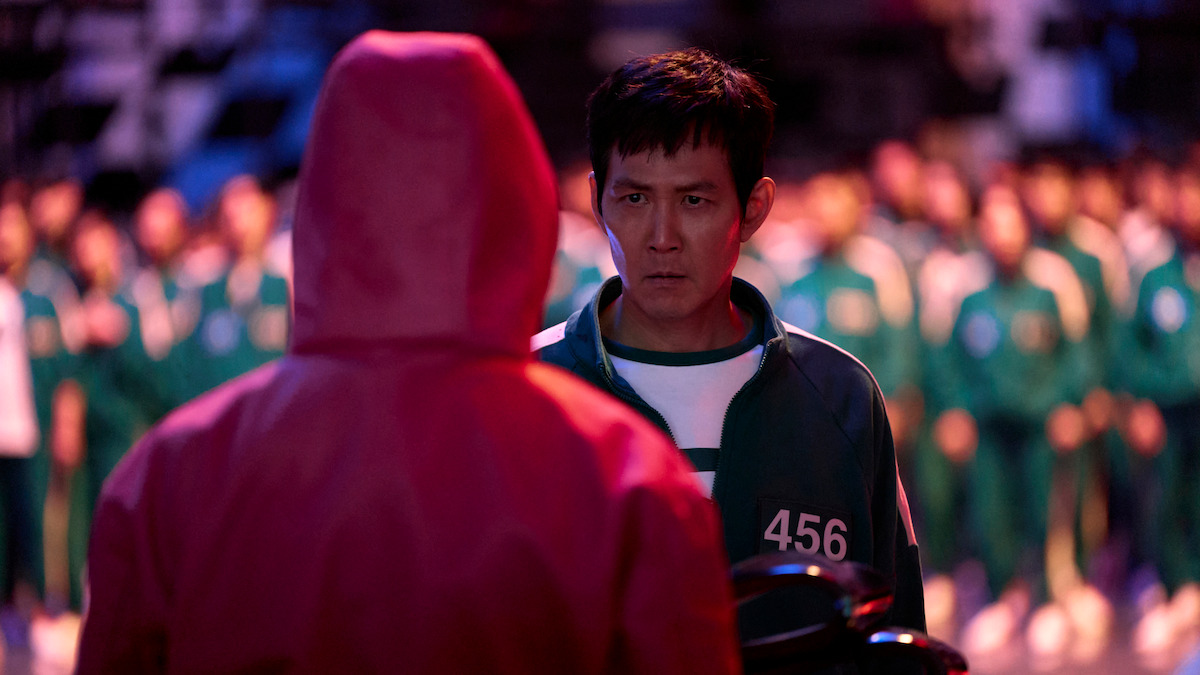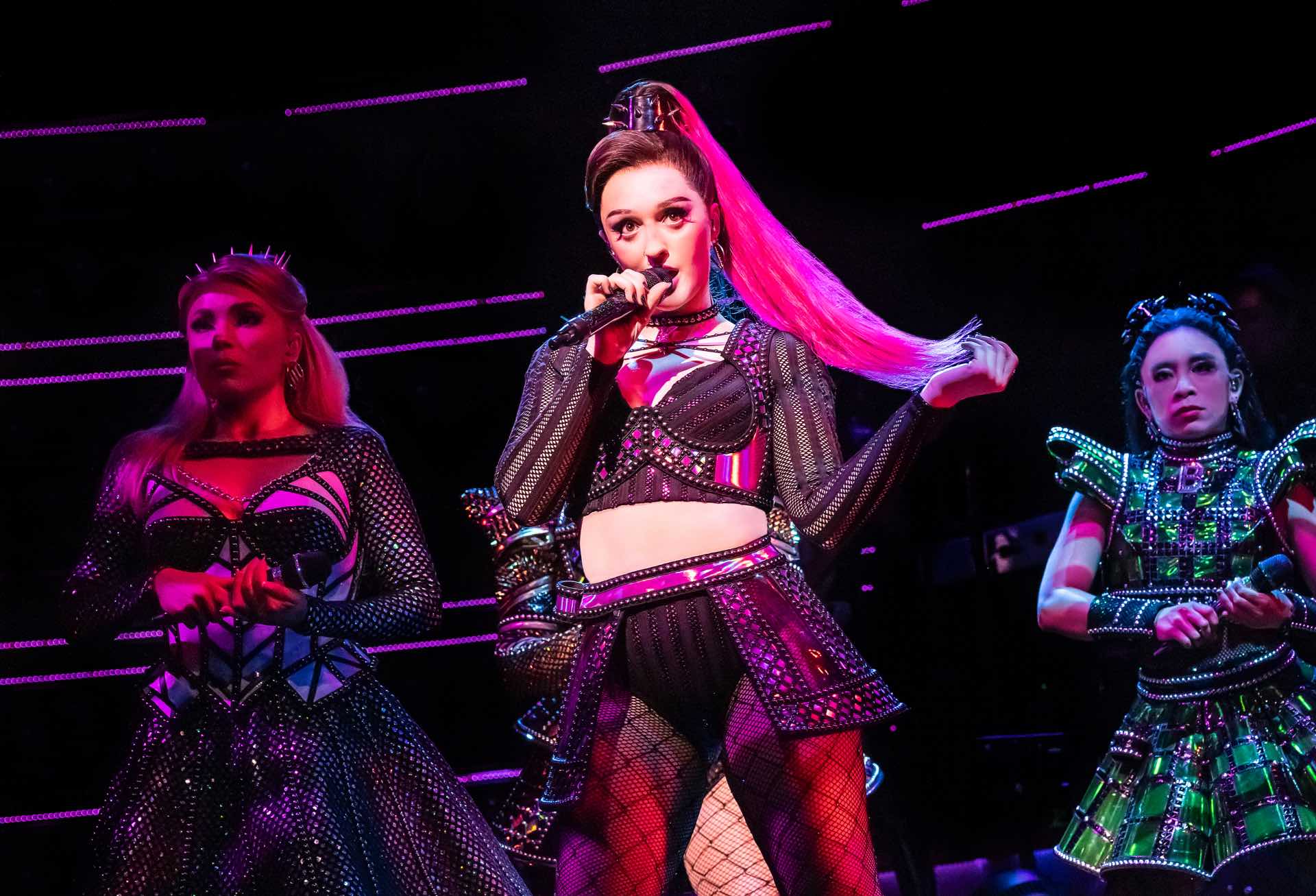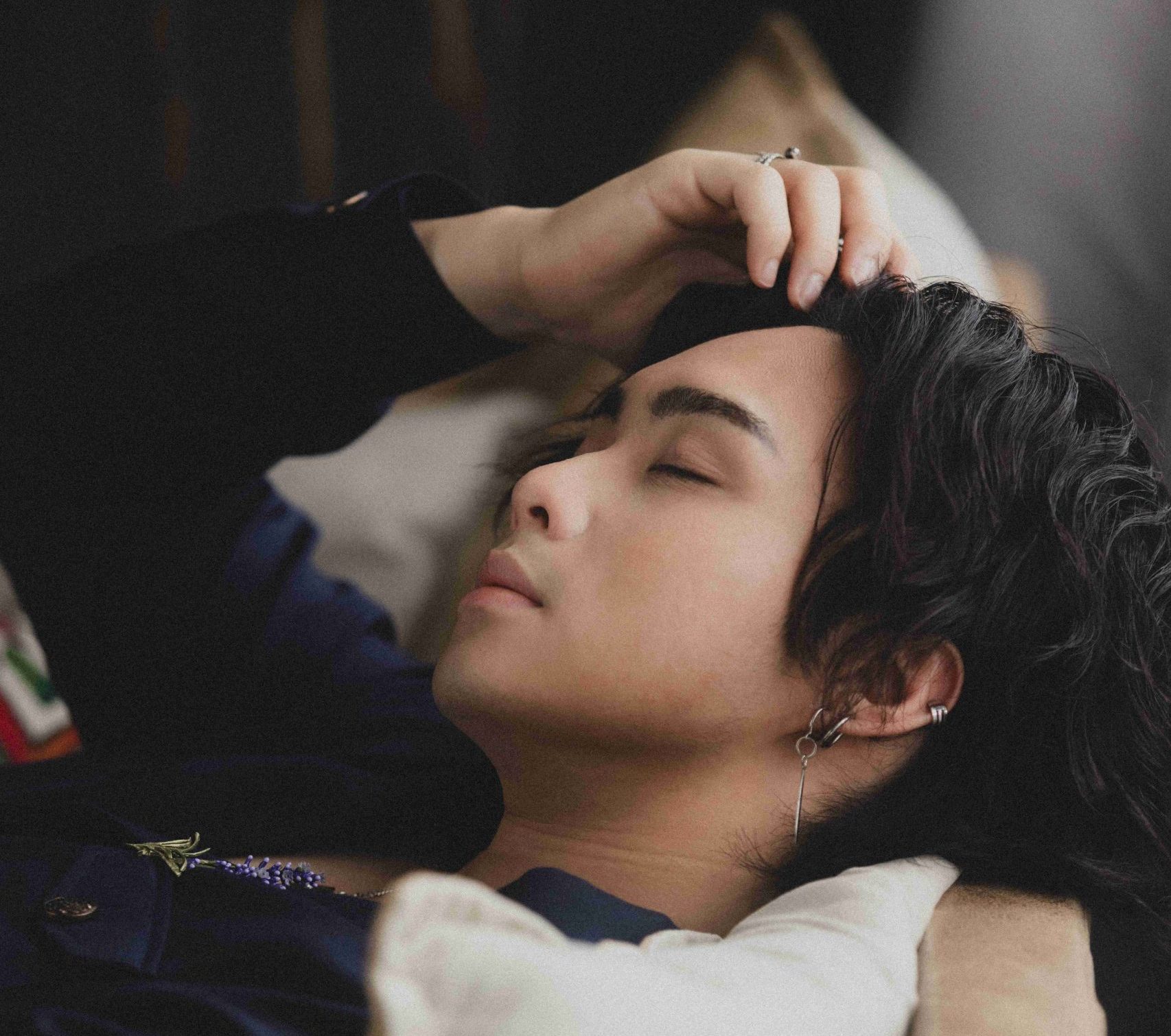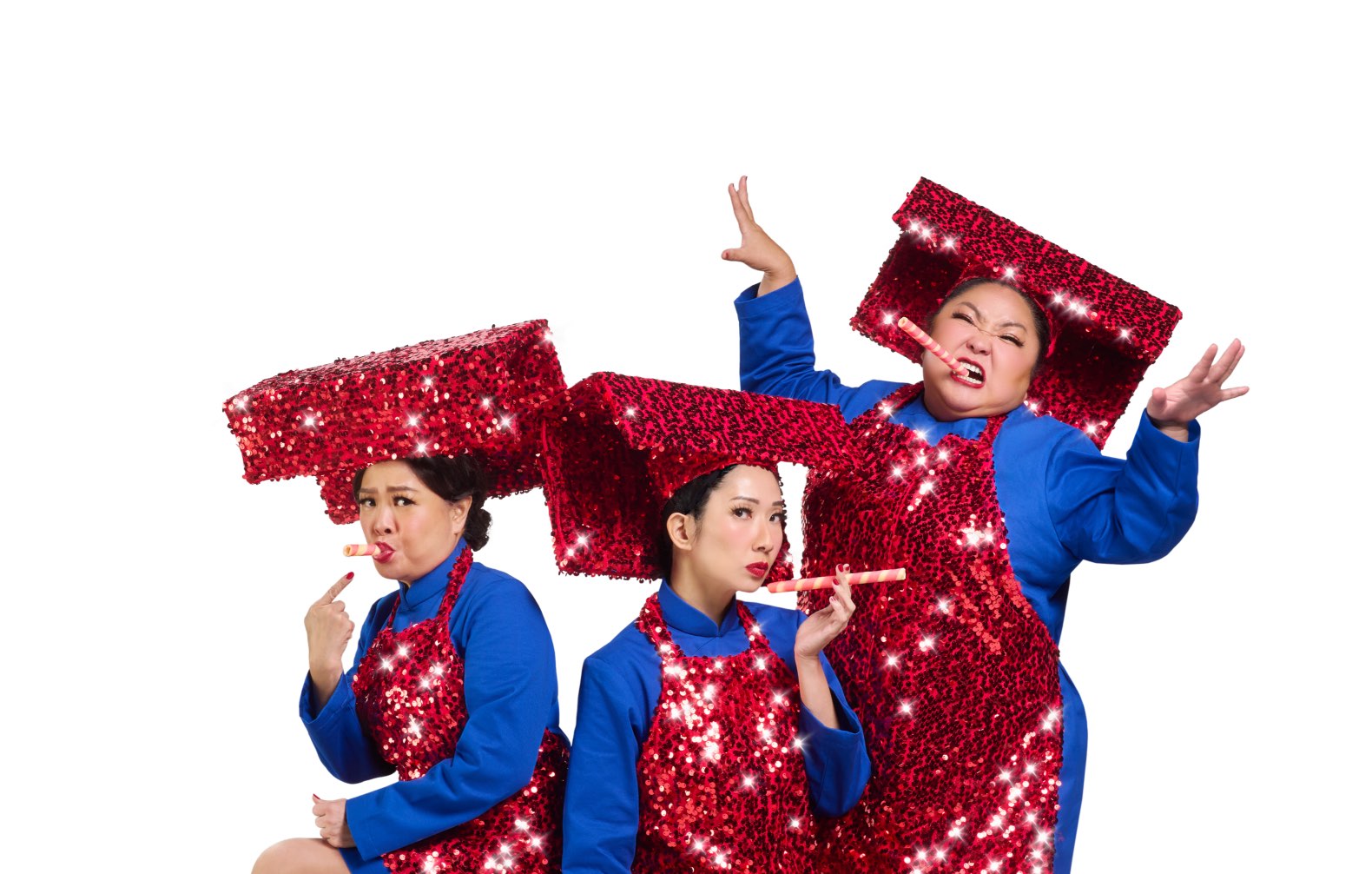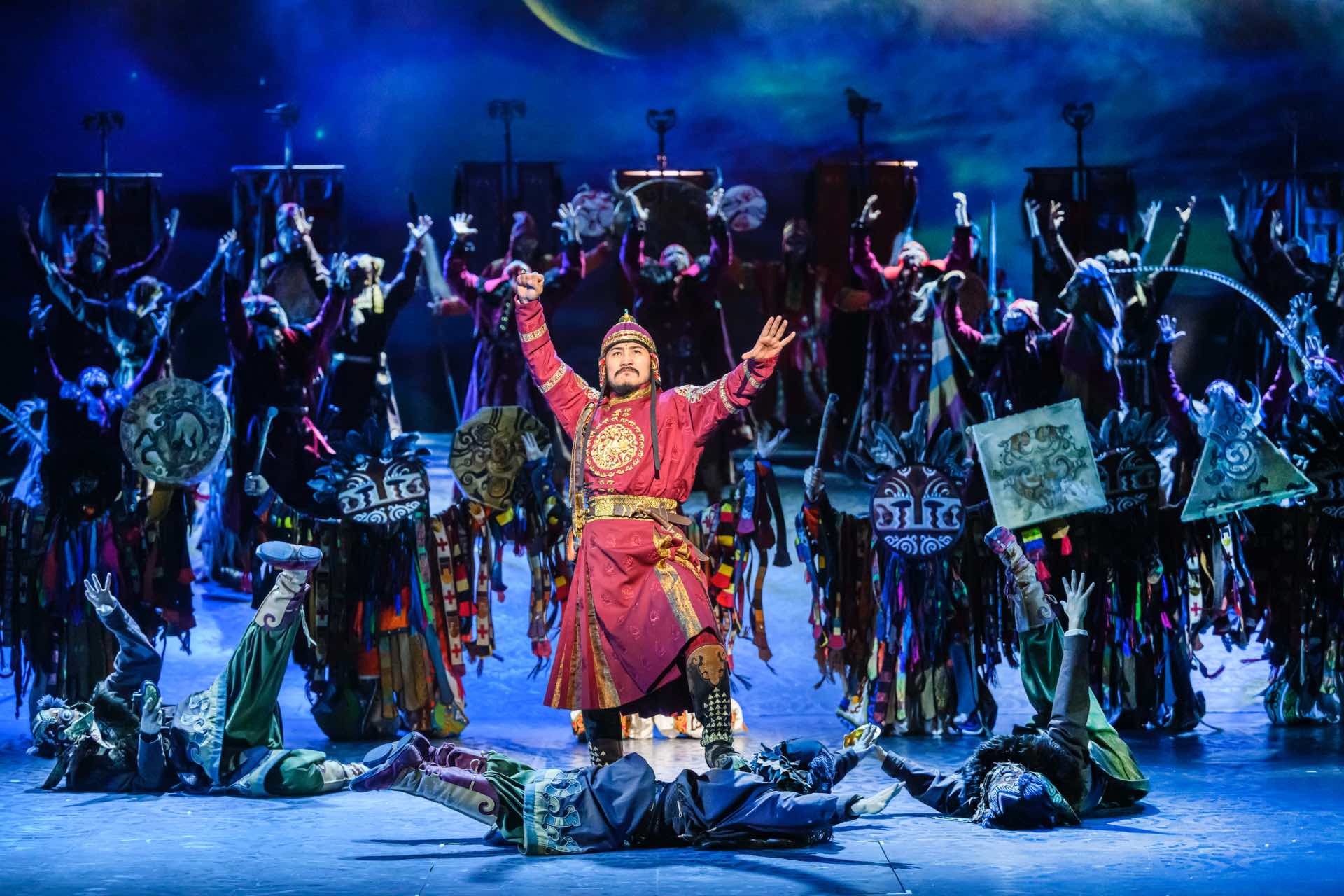
As soon as the curtain lifts, the audience is transported into another world, completely immersed in the rich universe of the Hunnic Empire. The intricate story feels vibrant with anguish, familial tensions, divinity, and love.
The Mongol Khan is a theatrical spectacle like no other. First to appear on stage are the nimble foxes, represented by two spritely dancers in bright red and green costumes with tiny whimsical figures of foxes dangling from their wrists. They represent the ancient Mongolian tradition of hanging small iron foxes over a baby’s cradle for protection. The curtain then lifts to reveal an action-packed scene of a village celebrating the birth of two baby boys, both supposedly belonging to Archug Khann, ruler of the Hunnu Empire. One son is mothered by his consort and the other by his queen.
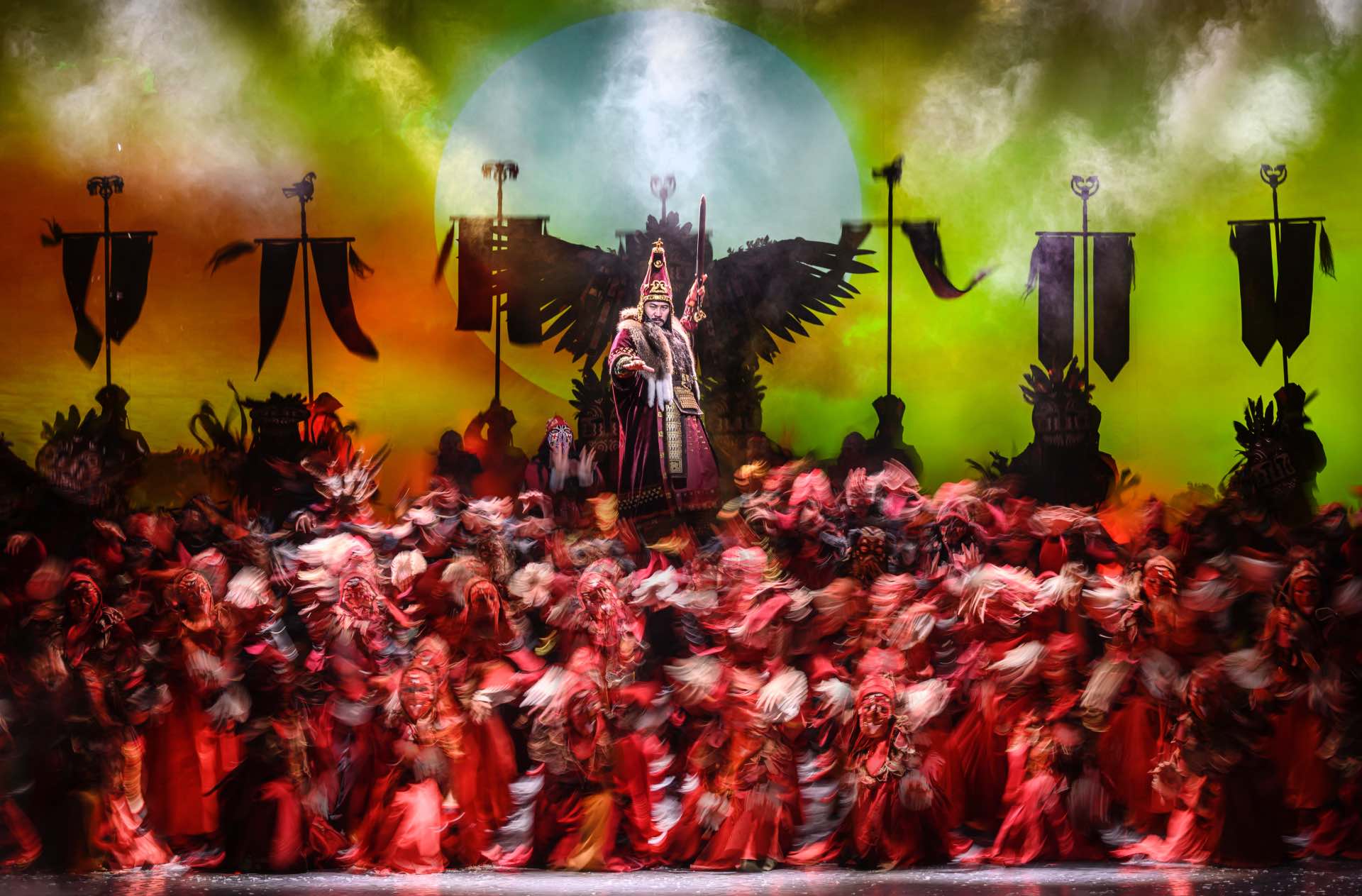
The story unfolds as conflict and violence arise from the decision over which son will be his heir. In the celebration of the babies’ birth, ensemble members are decked out in bright, colourful costumes, synchronising their movements to the swell of dramatic music. The back half of the stage tilts upwards, producing the illusion of an expansive plaza. These mesmerising opening scenes give the audience a taste of the spectacular visually appealing scenes to come.
The main characters’ costumes are incredibly intricate, featuring elements inspired by historical Mongolian fashion. The audience’s attention is drawn to Archug Khan’s crown, a long golden helmet-like headpiece that signals his rulership. He also has a magnificent deep red coat with animal fur that he attempts to gift to his son as a symbol of his son’s readiness to rule. Erdenebileg Ganbold is incredibly convincing in the role of Archug Khan, exuding nobility and confidence in every movement.
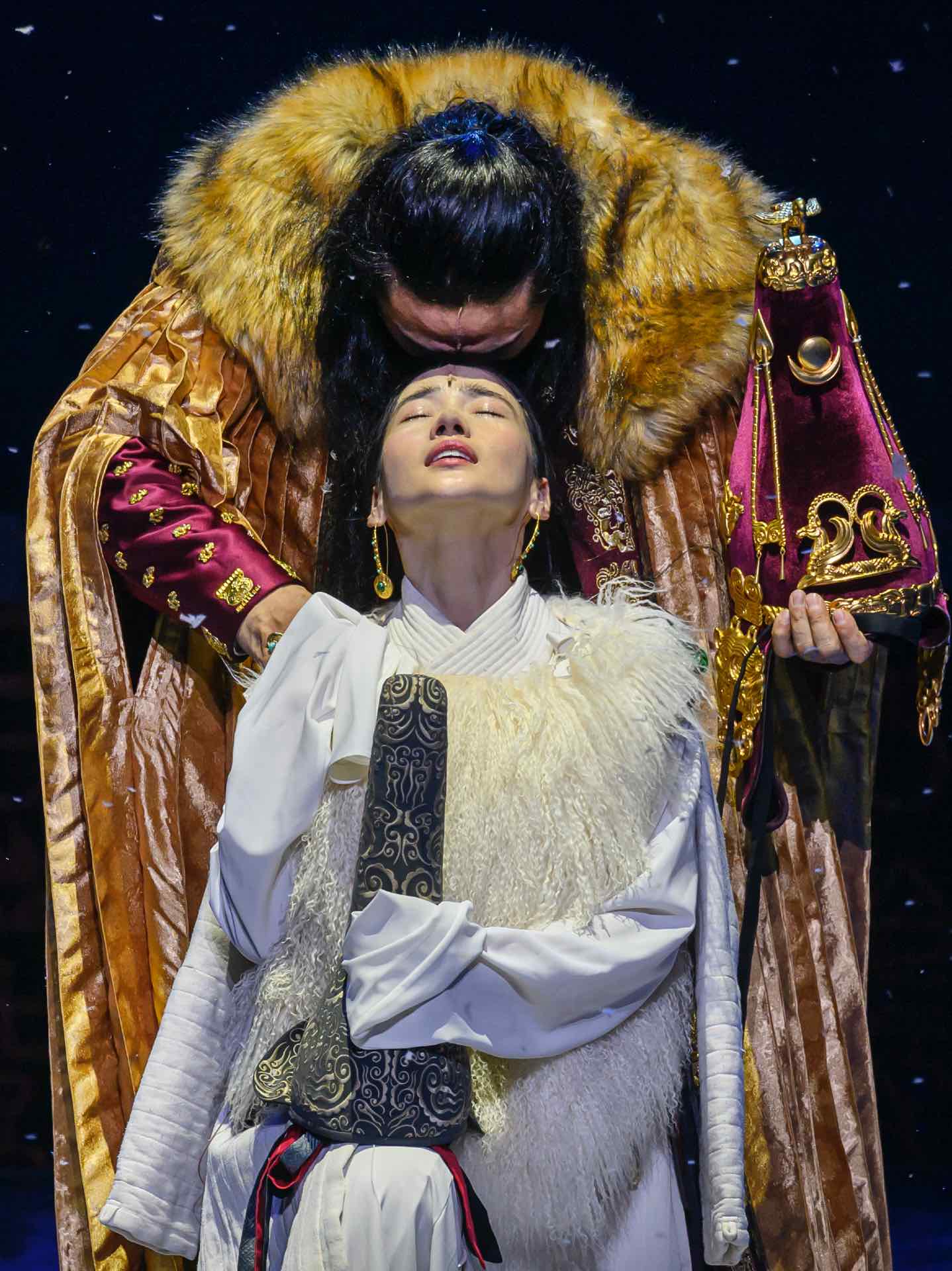
The production contains incredibly haunting scenes; most notably, scenes between the violent Chancellor Egereg and Queen Tsetser. During these scenes, the ensemble dons a suit with red tendrils hanging down their bodies, the flesh-coloured costumes making the members look like sinewy bodies of raw flesh. They mirror the way Queen Tsetser is only valued by Chancellor Egereg for her body. The dancers move with the queen, recoiling violently alongside her as she is hit by the advisor, their bodies matching her writhing movements. Acting as Queen Tsetser, Uranchimeg Urtnasam gives audiences a jaw-dropping performance as the tortured woman who exists in constant and deep despair. Her screams of anguish are particularly gut-wrenching to hear.
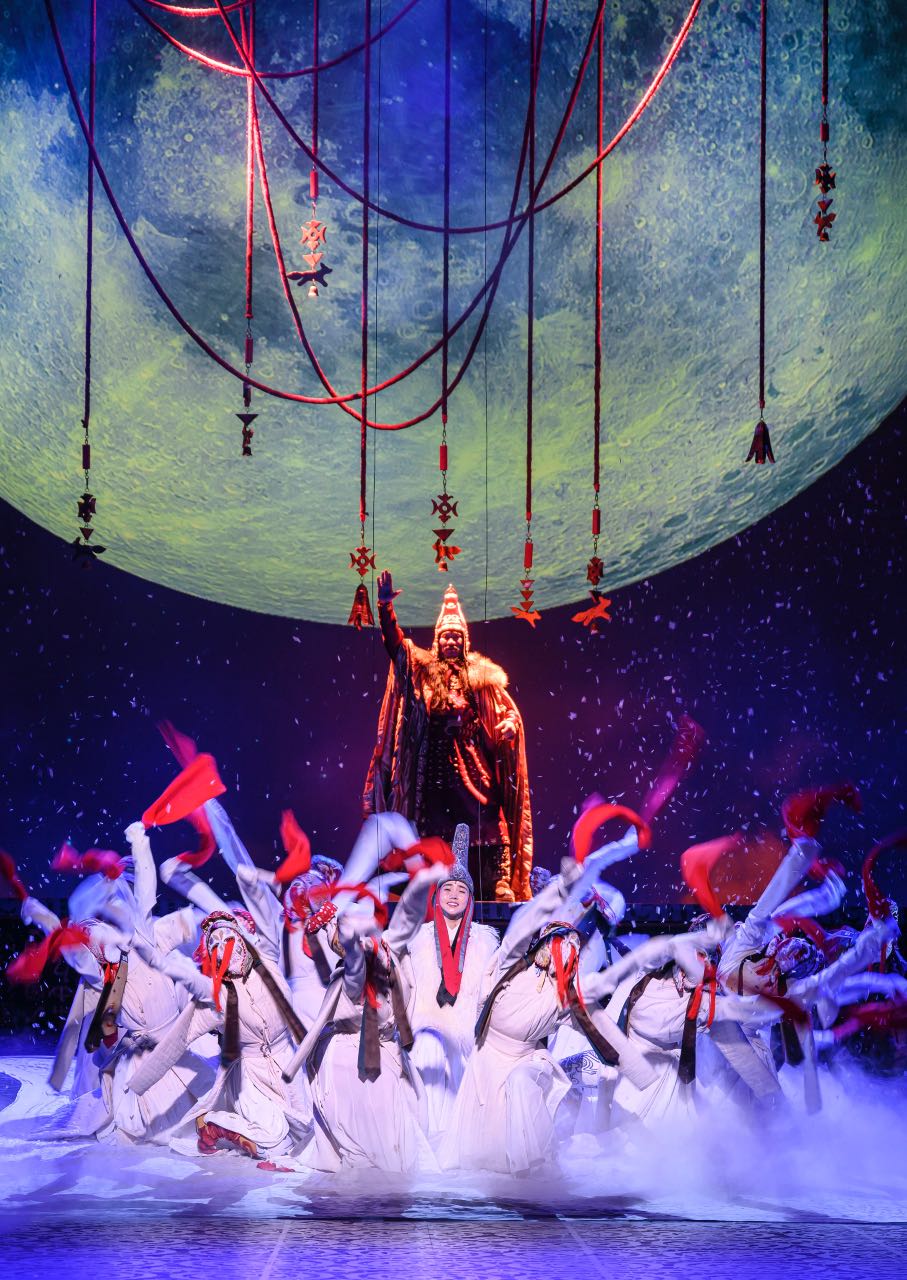
The production benefits from utilising the talents of the cast to the fullest. Acrobatic stunts and contortionist acts are peppered throughout the performance, eliciting gasps from the audience. These unique elements also reflect Mongolian performing arts traditions – Mongolian contortion, for instance, is a traditional Mongolian art that dates back centuries and is tied to rulership.
The Mongol Khan is an excellent immersion into the historical traditions of ancient Mongolia. This production which I caught has an entirely Mongolian cast and is performed entirely in Mongolian with English subtitles, but audiences can opt for the English language performances with Mandarin subtitles. Diverse forms of theatre, from New York-based musicals or Mongolian theatre, are to be treasured for different ways that they touch the hearts of audiences. It is a joy to know that The Mongol Khan has achieved global recognition and that theatregoers in Singapore will be able to enjoy this production in all its cultural uniqueness.
The Mongol Khan runs from now till Nov 3, 2024 at Sands Theatre, Marina Bay Sands. Tickets are available at Marina Bay Sands, Sistic and Klook.
Text by Beverly Anne Devakishen. Photos by Katja Ogrin.


